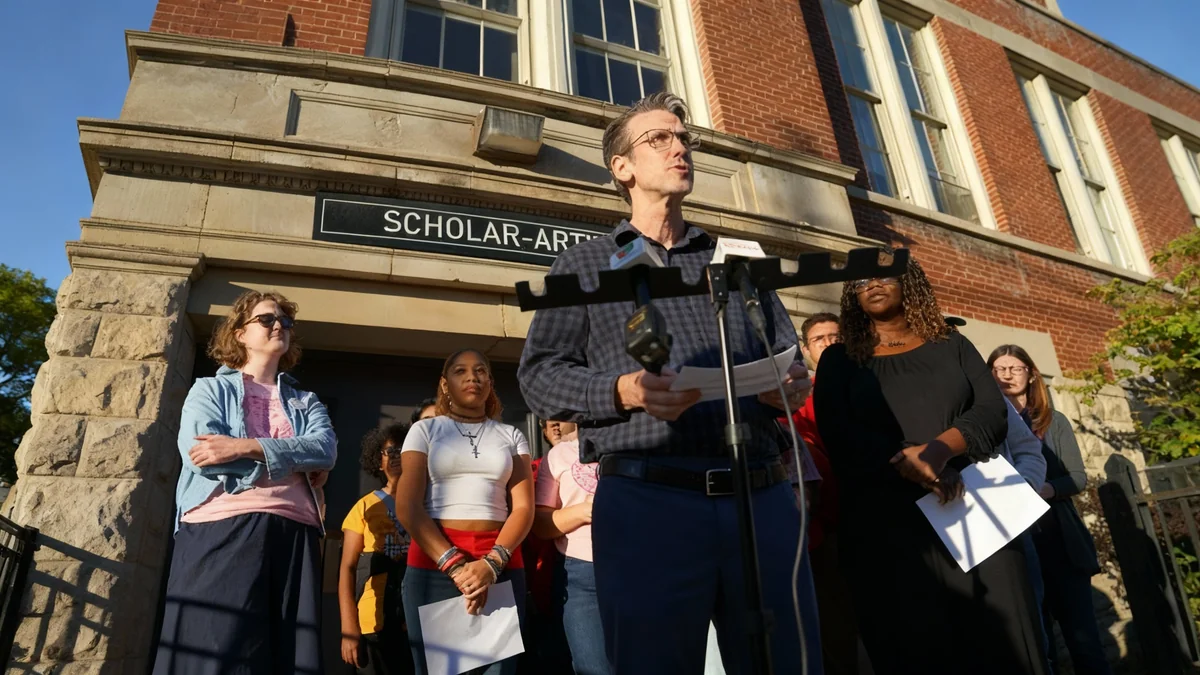The Chicago Board of Education has voted to take over operations of the Chicago High School for the Arts (ChiArts) while simultaneously approving a plan to close EPIC Academy at the end of the current school year. The decisions, made during a contentious special meeting, will directly impact over 800 students and their families across the city.
ChiArts, a selective-enrollment arts conservatory, will transition from an independent operator to a district-run school, backed by $1.5 million in city funding. In contrast, EPIC Academy, a charter school in South Chicago, will receive $1.4 million to remain open through the spring before permanently closing its doors.
Key Takeaways
- The Chicago Board of Education will convert ChiArts into a district-run school, ending its contract with the current operator.
- EPIC Academy, a charter school, will be permanently closed after the current academic year concludes.
- The board allocated $1.5 million for the ChiArts transition and $1.4 million to ensure EPIC Academy can complete the school year.
- The decisions prompted emotional testimony from students and a heated debate among board members regarding equity in school closures.
A New Chapter for ChiArts
The future of the Chicago High School for the Arts has been secured, though its governance structure will fundamentally change. The Board of Education's vote brings the acclaimed arts high school, which serves 559 students, directly under the management of Chicago Public Schools (CPS).
This decision follows the school's independent board announcing it could no longer operate the campus. The transition aims to provide stability for a school known for its rigorous arts conservatory program, which requires students to audition for spots in creative writing, dance, music, theater, and visual arts departments.
Preserving a Unique Model
During the meeting, students and faculty voiced strong concerns about protecting the school's unique identity. They urged the board to maintain the conservatory model and retain the current staff of teachers and professional teaching artists who are central to its success.
"You hold the livelihoods of more than 60 arts teachers, you hold the sanctuary of over 600 art students run toward in a world that frequently tells us we aren’t necessary," said Maya Davis, a ChiArts senior. "Let it be the haven I’ve experienced it to be."
In response to these pleas, board member Debby Pope introduced an amendment committing CPS to preserve the ChiArts conservatory "to the greatest extent practicable." The amendment also mandates that the board explore additional financial support and partnerships to sustain the school's model. A follow-up discussion on funding is scheduled for the board's January meeting.
What is a Contract School?
Contract schools like ChiArts are public schools operated by private, non-profit organizations under a contract, or agreement, with the local school district. While publicly funded, they have more autonomy over their curriculum and staffing than traditional district-run schools. The board's vote effectively dissolves this contract and integrates ChiArts into the main CPS system.
The End of an Era for EPIC Academy
While one school community found a path forward, another learned its time was running out. The board voted to "wind down" EPIC Academy, a charter school in South Chicago with an enrollment of 244 predominantly Black students.
The school's operators had previously warned of a potential mid-year closure due to financial shortfalls. The $1.4 million approved by the board is intended to serve as a lifeline, allowing the school to operate through the end of the academic year before shutting down permanently.
88%: According to board member Jitu Brown, this is the percentage of students impacted by past Chicago school closings who were Black. Research from the University of Chicago has shown that most of these students did not transfer to better-performing schools.
The district will now be required to offer enrollment opportunities to all EPIC Academy students at other district-run schools. The plan also includes offering job opportunities to "qualified" EPIC staff at the schools that receive these students.
A Tense Debate Over Equity and Choice
The decision regarding EPIC Academy sparked a significant debate among board members, highlighting long-standing tensions over school closures and their impact on minority communities.
Board member Jitu Brown initially proposed an amendment to ensure EPIC students and staff could remain together at a new, high-performing school. However, the term "high-performing" was ultimately removed after concerns were raised about implementation timelines and principal hiring autonomy.
"How do we make sure a child doesn’t go from one school that’s closing its doors in the middle of the night, then they end up at a school that’s going to be in discussions for school closings the next year?" Brown asked during the meeting. "This has happened over and over and over and over again, and this is the concern."
Brown referenced historical data showing that school closures in the city have disproportionately affected Black students, who often did not end up in better academic environments.
Differing Views on Performance Metrics
Board member Che "Rhymefest" Smith, whose district includes EPIC Academy, argued for a broader definition of a good school, emphasizing that parents have diverse priorities.
"Parents choose different schools for different reasons," Smith stated. "What one person may consider high-performing may be subjective to another person. I speak with parents who send their children to a school because it’s the safest school in the district for their kid to go to, even though another school may have better academics."
The final resolution reflects a compromise, focusing on providing placement options for students and employment opportunities for staff without mandating transfers to schools with specific performance ratings. The lengthy deliberations, which included a four-hour closed session, underscored the complex challenges the board faces in balancing student welfare, staff stability, and district resources.





